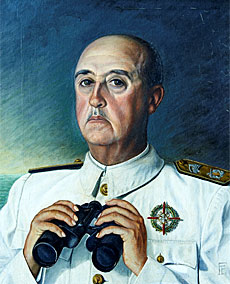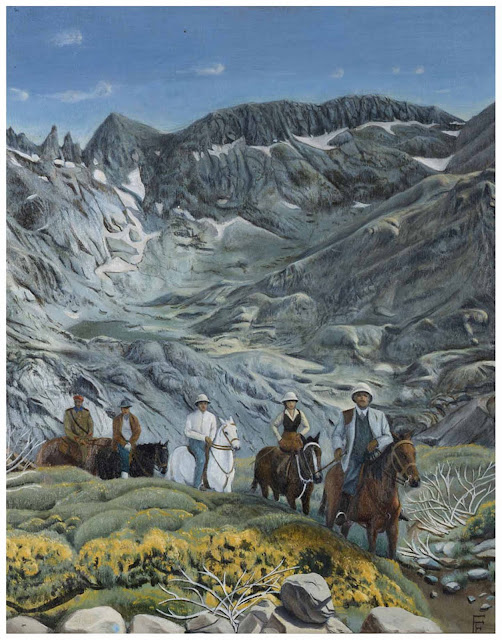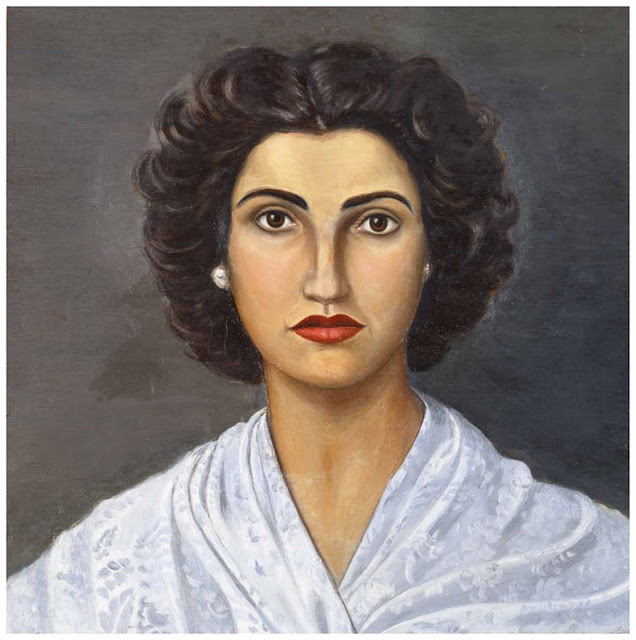
Posted on 07/23/2013 6:35:27 PM PDT by annalex

The grandson of the Caudillo revealed in his book, "La naturaleza de Franco. Cuando mi abuelo era persona" that his famous grandfather, and, in my estimation, easily the greatest national leader of the 20th century, was also a painter.
"After dinner, granddad often would lock himself in the studio and paint. ... Francisco Franco was a loving grandfather, excellent companion in hunting and fishing, my teacher and my friend. When we were alone, fishing or sitting around the campfire, gradndad told me stories from his youth. They always began with the words 'When I was a regular man...'".
What do you think? I expected depth, that I do not find in the pictorial exercises of Hitler's and Churchill, and I found it. The hunting scenes in particular reveal a man who understands the tragedy that has befallen Europe, knows his brutal age and has the courage to fight through it; and at the same time his inner eye hasn't lost the tranquility of the soul that we detect in the beautiful pond scene.
Franco was not a professional artist: we see an uncertain line and awkward composition; the color seems to be a bit timid. But on the insight into his age and hours, I'll take his work over Dali's dull and hate-filled "Premonition" any time.










That he saved his country twice, from international communism and from the meat grinder of the Second World War. I wish he had also saved Spain from the EU, but he died too soon. Future leaders should learn from him and imitate him if our civilization is to survive.
Right here, #21.
Oops! Sorry, guess I did.
Thank you.
Your response led me to this Wikipedia entry. During the War, Franco walked a tightrope on behalf of the Spanish people. Treatment of the Jews should be understood in the context of the Reconquista.
I don’t see anything justifying criticism in Spain’s treatment of the Jews. Of course, the Left always hated Franco, for the same reasons the conservatives should love him.
I wanted to add: the treatment of the Jews in 1941 did not have the same litmus-test quality it has today, because back then no one expected that an entire ethnic cleansing program was going to be implemented by the Nazis. The Germans equated the Jews with Communist International and considered them potential enemy, just like we, for example, considered the American Japanese potential enemy and interred them. When the extermination camps were discovered in 1944-45 by the Allies, it was a shock to them also.

First, notice the excellent treatment of still life here. The woodwork, especially, seems true to the touch, with the silvery shine of the wood aged by the hot winds. It is an old house or maybe a barn; glass isn't necessary in this warm climate and the air from the outside freely comes in.
Yet, here are the bars. The air we like; the intruder, we don't. It is against him, the burglar, one who comes in order to steal, that we guard our small possession. Communists, keep out. We got guns.
The nail on which the hare hangs is placed strategically. Perhaps, spiced meats would hang out in its place to dry and cure in the hot sun. Or maybe, garlands of garlic and peppers. This farmer has a peaceful, well organized, happy, self-sufficient, modest and proud life.
This is also a meeting of two animals, one -- once free and now dead and inside, as it is, of a cage, the other --obedient, faithful, intelligent and free to roam outside. A silent conversation is seen in the dog's quizzically twitching nose and the rigor mortis taking hold of the hare's body. Freedom and duty, loyalty and furtive curiosity, death and life are here. Observe. It is a great painting indeed.
Disclaimer: Opinions posted on Free Republic are those of the individual posters and do not necessarily represent the opinion of Free Republic or its management. All materials posted herein are protected by copyright law and the exemption for fair use of copyrighted works.